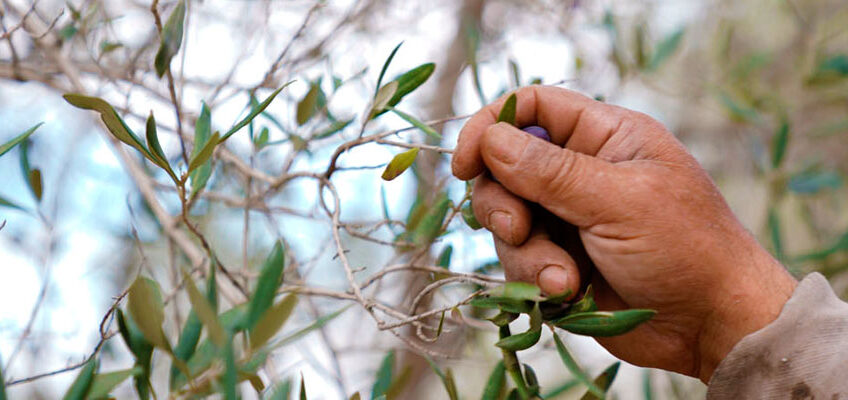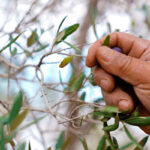Harvesting is not only a flagship moment kickstarting the olive oil making process, but it is also a fundamental activity that is defining to crop quality and yield, as well as overall production cost.
In fact, harvesting practices are of great significance in olive oil production; Properly managed harvest can lead to producing more and better quality olive oil while paring costs.
Special considerations for optimal harvesting conditions:
- Harvest time: Harvest should be conducted while the olives, still hanging on the tree, are at the right ripening stage, when the quantity and quality of oil in the fruits are at their highest. Past the optimal harvest time, olives are subject to natural fruit drop, undesirable fruit damage and loss exacerbated by adverse weather conditions, with a negative impact on the crop quality and yield as well as next year’s crop.
- Harvest technique: The operation of fruit detachment from the tree should preserve the olives unbruised, and the tree structure intact, averting damage to branches, leaves and roots, not to jeopardize the oil quality or the following season crop. Dislodged olives are caught on polypropylene nets to attenuate the fruit impact on the ground, and held apart from any collected olives that had fallen onto the soil under the trees.
- Harvest cost: Harvest is the largest overhead of olive growing activity; it can typically account for 50% to 80% of the overall production cost when traditional methods are employed. Thus the importance of optimizing costs associated with harvest for economic viability.
Worth noting that olive fruits are sensitive to damage from handling not only during but also after harvest. Every effort should therefore be made to preserve fruit integrity and avoid bruising softly fleshed olives, collected upon harvest, which should be stored in specialized crates, and crushed straight away for oil extraction to prevent quality deterioration.
Commonly used harvesting methods:
- Handpicking: The most primal harvesting method in practice, it is characterized with care and precision. Delicate on both the fruits and the tree, it is in nature manual, slow, labor intensive and costly; and comes up against the challenges of fruit accessibility within the canopy, worker shortage, extended harvest period, and increased risks of waste associated with late harvest.
- Beating: The most traditionally widespread harvesting method, it is rather efficient and cost effective with good reach over the entire fruit-bearing shell; but remains demanding in terms of time and effort. The application of wide strokes is aggressive on the tree and conductive to bruising of the olive fruits and abrasion of the fruiting limbs, with negative effects on olive oil quality, crop seasonality and orchard sustainability.
- Mechanical: The modern harvesting method, using mechanical aids (branch shakers, combing machines…) inside the canopy to explore the fruit-bearing areas, it achieves good removal rates without impairing the fruits or the tree. Characterized with efficiency and speed, it shortens the harvest cycle, increases productivity, lowers production costs, limits labor use and makes work less tiring. Generally, mechanical aids double harvest efficiency with respect to hand picking.
When it comes to optimizing the harvest process and outcome, mechanical harvesting strikes the delicate balance between quality output, harvest rates, and economic results; even more so for production at scale.







Leave a Reply